Are you just getting started raising chickens? Would you like to add another breed to your current flock but aren’t sure which? Deciding on new (or initial) chicken breeds can feel overwhelming. There are so many options available and tons of information floating around. Things become even more complicated when you need a gentler breed. Sorting through the overwhelming amount of knowledge can take a lot of time that you don’t have. We’re here to help! We have gathered information on some of the gentler or more friendly breeds available and grouped them into egg layers, dual-purpose, and pets. So you can find exactly what you need.
Egg Layers
Some chicken breeds were developed specifically for their egg-laying prowess. The good news is that many are also very gentle, friendly, and fun to have around.
Polish
These super-friendly chickens are extremely calm. Polish chickens get along well with other chicken breeds, so consider adding them to an existing flock. However, there are a few cautions to be aware of. More dominant chickens tend to bully Polish chickens since they are so docile. They can also be a little anxious.
This breed comes in several colors, including silver laced, white-crested lace, buff laced, white-crested blue, golden laced, splash, and blue. They lay a decent amount of eggs, averaging three to four weekly.
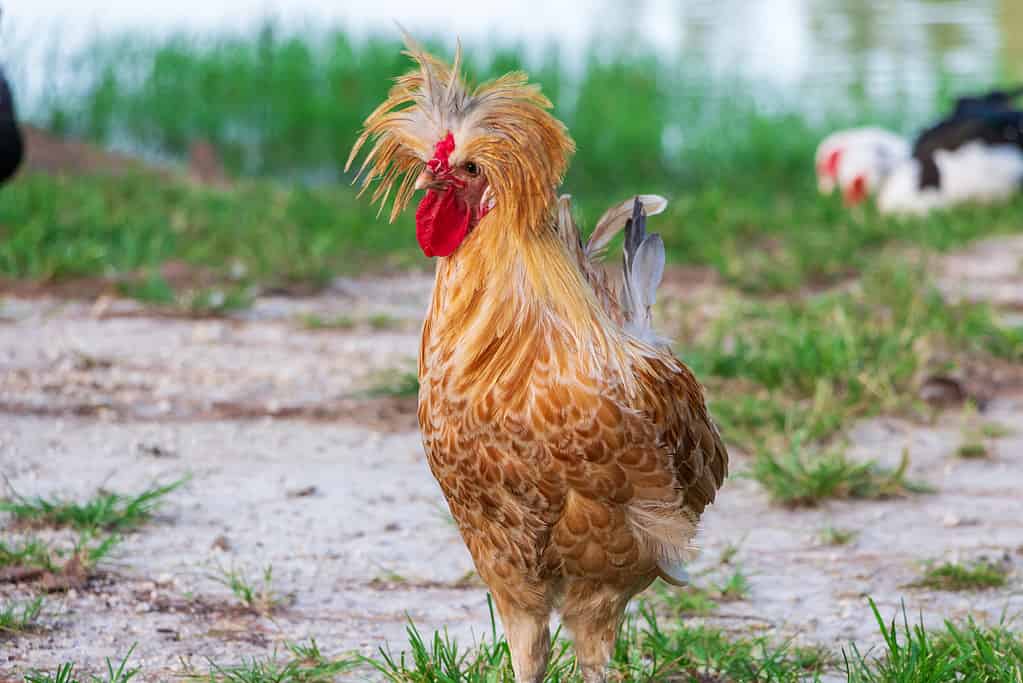
This buff-laced Polish chicken shows off its calm disposition.
©Sunshower Shots/iStock via Getty Images
Andalusian
This breed is one of the calmest out there. Andalusian chickens are so relaxed and gentle that they often become showwaves. They also get along well with other chickens, making them an ideal breed to incorporate into existing flocks. Additionally, they are very cold-hardy and can tolerate colder environments.
Andalusian chickens all have a blueish tint. They produce roughly five to six eggs weekly.

Andalusian chickens enjoy foraging for some of their food.
©Amani A/Shutterstock.com
Ameraucana
If you are looking for a supremely docile bird, check out Ameraucana chickens. These sweet, social, and curious animals make fantastic pets. They make fantastic pets and are great around children.
This breed comes in many colors: wheaten, white, brown, red, black, buff, blue, silver, and blue wheaten. They lay three to four eggs weekly that are a fantastic shade of blue.
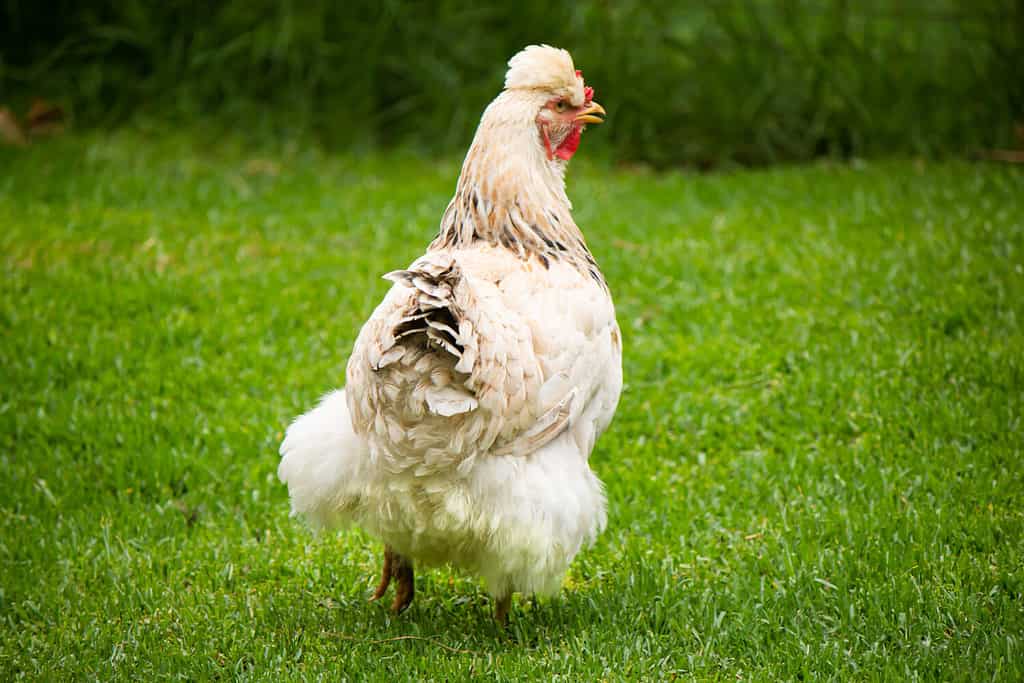
Ameraucana chickens are sweet, social, and curious animals that make fantastic pets.
©Vampyre Zen/Shutterstock.com
Wyandotte
Wyandotte chickens are very even-tempered and tend to get along well with people and other breeds. They are also cold-hardy and will thrive in a variety of environments.
This breed lays four to five eggs every week. You can find them in solid white, golden-laced, silver-laced, and several other colors.
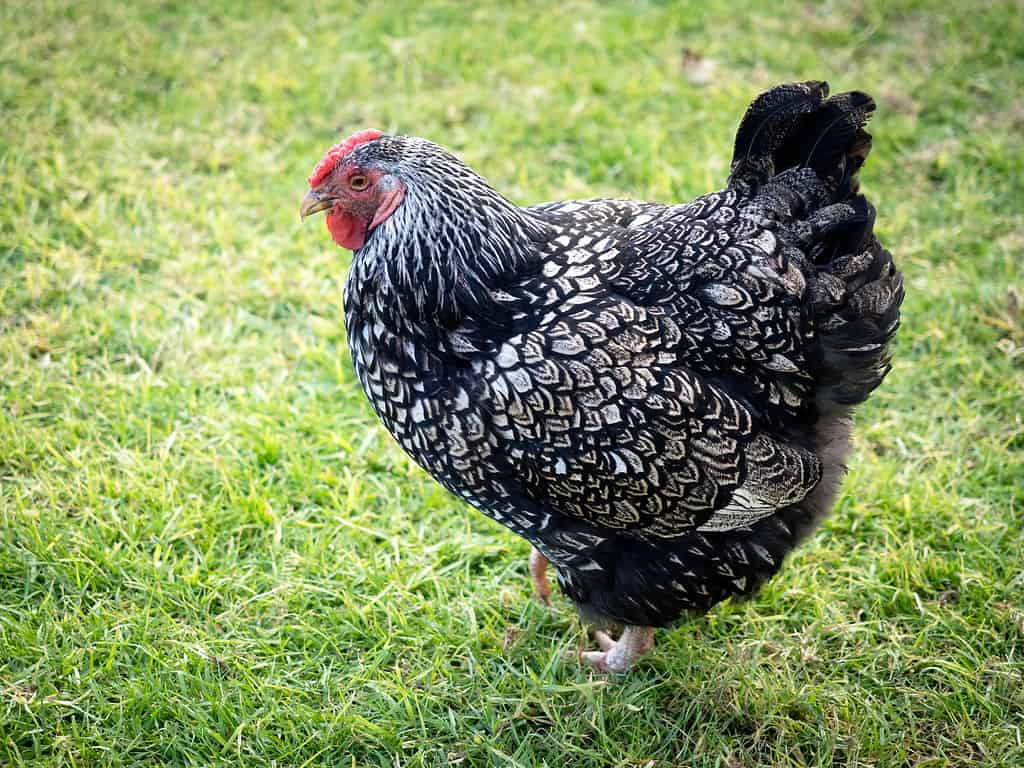
Wyandotte chickens are even-tempered, lay several eggs weekly, and tolerate colder weather well.
©Wirestock/iStock via Getty Images
Speckled Sussex
Get ready to snuggle with this friendly breed. Speckled Sussex chickens are curious and love being held. They need more attention and will like to follow you around the yard.
Speckled Sussex chickens produce around four to five eggs every week. They should have deep brown feathers with white tips. There are also strips of black in between the white and brown tones.

The speckled sussex breed gets its name from the unique coloring on their feathers.
©JZHunt/iStock via Getty Images
Easter Egger
These unique chickens are not technically a breed. They are hybrid birds. And that means there are no specific coloration requirements. Each bird will have uniquely colored feathers, making them extra fun. They are sweet birds that get along well with children.
Easter egger chickens were bred specifically for their unique eggs. They lay bright blue eggs at a rate of roughly four eggs a week.

This breed lays remarkably blue eggs.
©JZHunt/ via Getty Images
Red Star
Another hybrid chicken is the red star. Like Easter eggers, red stars were bred for their egg-laying ability. However, their eggs are a lovely shade of brown. They produce roughly six to seven large eggs weekly.
Red star chickens like being around people but do not tolerate other birds. So, put them in a separate space if you have other birds already.

Red stars produce a large volume of eggs weekly.
©Tony Campbell/Shutterstock.com
Barbu D’Uccles
This bantam chicken is affectionate, friendly, and compassionate. It loves being handled by people, and enjoy holding conversations!
Barbu D’Uccles come in black, millefleurs, white, porcelain, and cuckoo. They lay approximately three to four eggs a week.
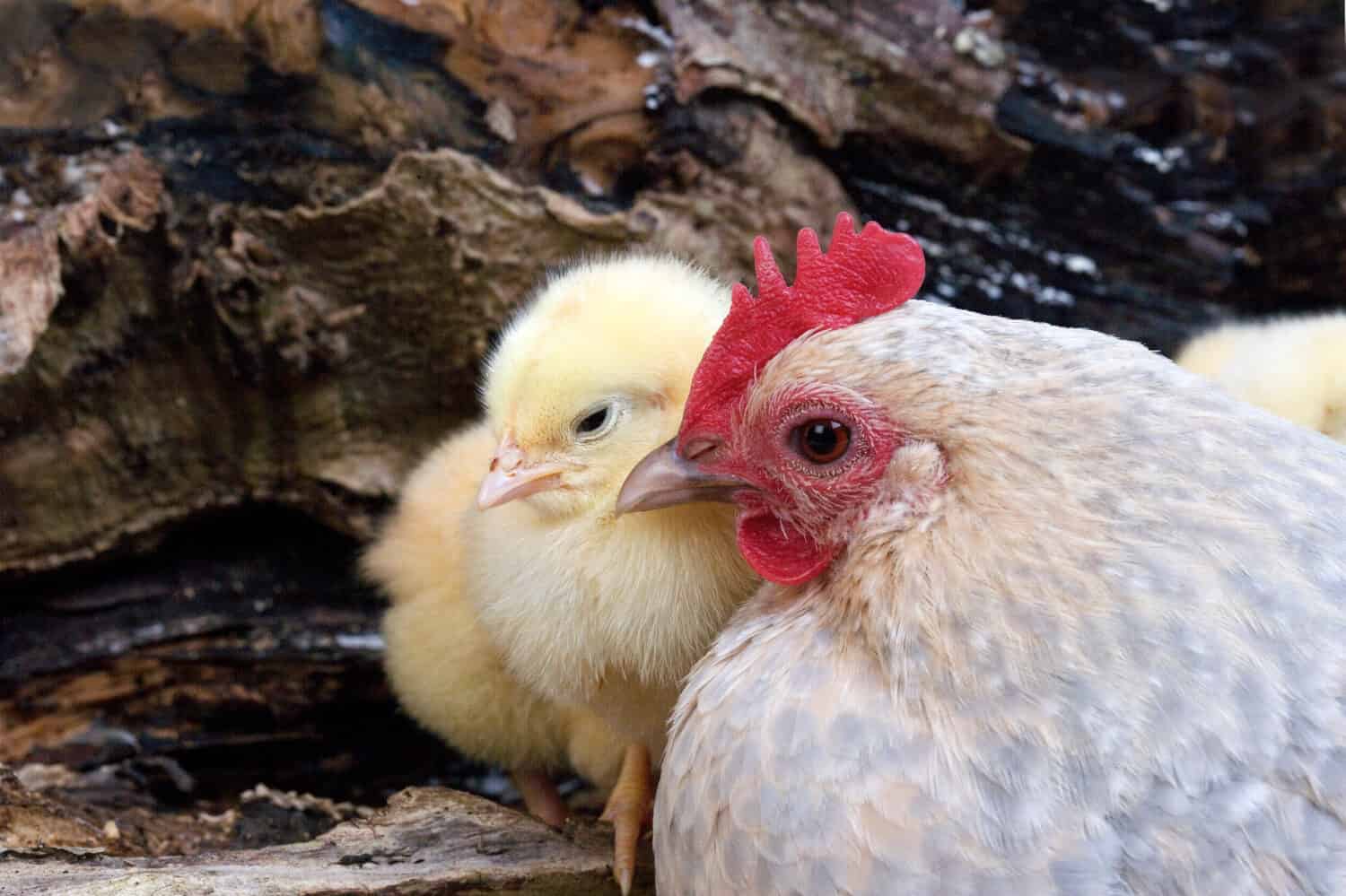
Barbu D’Uccles love hanging out with people and are very friendly.
©slowmotiongli/Shutterstock.com
Orpingtons
Orpingtons are friendly and like attention from their owners. They are so gentle that they are often kept as a pet! This breed is cold-hardy, so it is appropriate for colder regions. The birds are larger and can weigh up to eight pounds.
These chickens lay around three to five eggs weekly. Orpington colors vary, including blue, black, buff, white, and lavender.

Orpingtons have an elegant appearance and are extremely gentle.
©Victoria Moloman/iStock via Getty Images
Dual Purpose
Some chicken breeds are what is known as dual purpose. That means they may have slightly lower egg production than other breeds (although not always) and also make excellent meat birds.
Rhode Island Red
This chicken breed is very calm and social. Rhode Island reds also tolerate most weather and can thrive in most parts of the country.
As their name suggests, Rhode Island reds are always red. The range, though, is from light red to a reddish-brown. They produce around four to five eggs weekly.

Rhode Island Red live a long, happy life.
©Nadanka/iStock via Getty Images
Brahma
One of the calmest chicken breeds out there is the Brahma. They are extremely calm, making them great with kids. They don’t startle easily and are friendly with people and other chicken breeds.
Brahma chickens lay roughly three to four eggs weekly. They only come in three colors: buff, dark, and light.
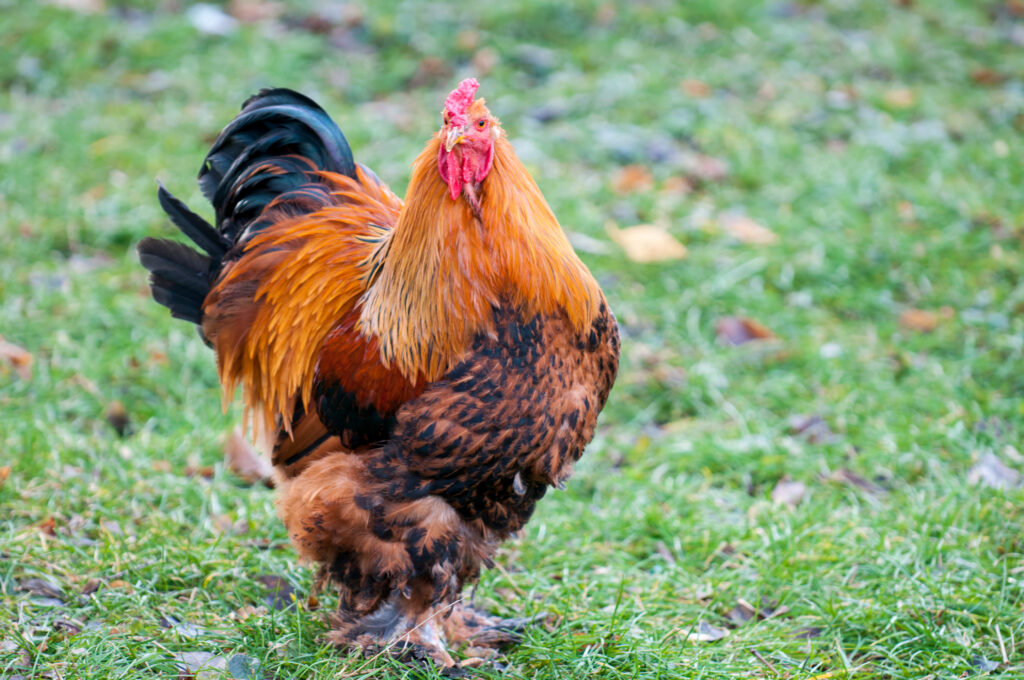
Brahmas are one of the calmest breeds you can add to your flock.
©Yuriy Bartenev/Shutterstock.com
Plymouth Rock
Plymouth Rock chickens are one of the oldest breeds in the United States. They are easy-going, friendly, inquisitive, and sweet. This bird is excellent with kids.
This breed lays around four eggs a week. They are available in many colors like blue partridge, dark, buff Columbian, light, gold, and white.
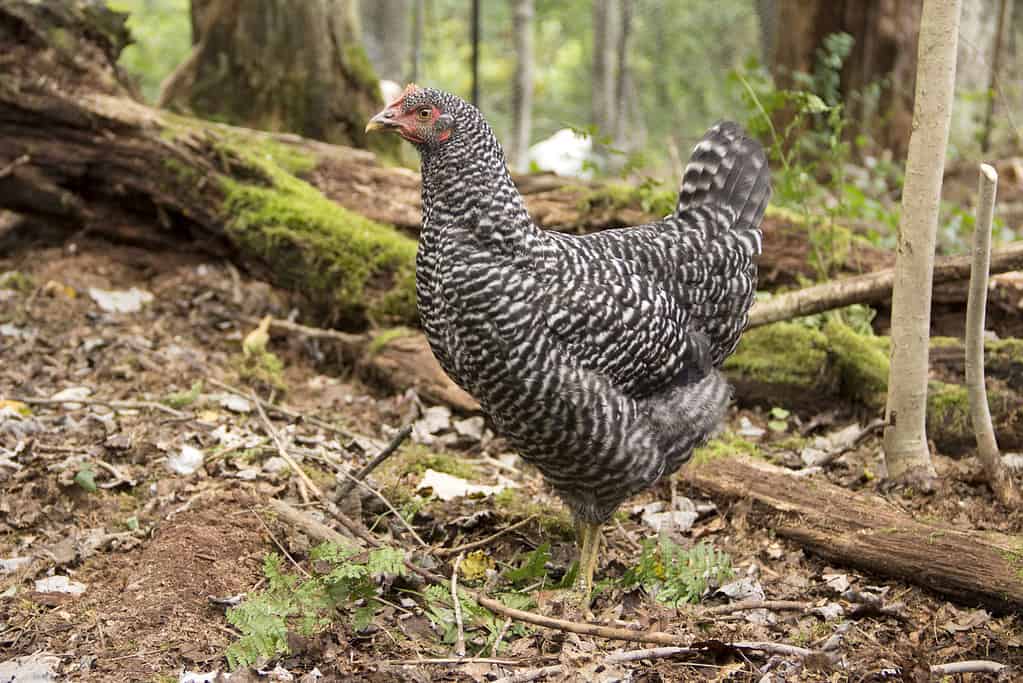
Plymouth Rocks have a distinctive coloring that makes them stand out from the crowd.
©JZHunt/iStock via Getty Images
Australorp
This breed is fantastic as a pet but works well as a dual-purpose bird. These are friendly chickens with a calm manner, making them great with children.
Australorps lay large brown eggs at a rate of roughly five weekly. They come with white, black, or blue feathers.
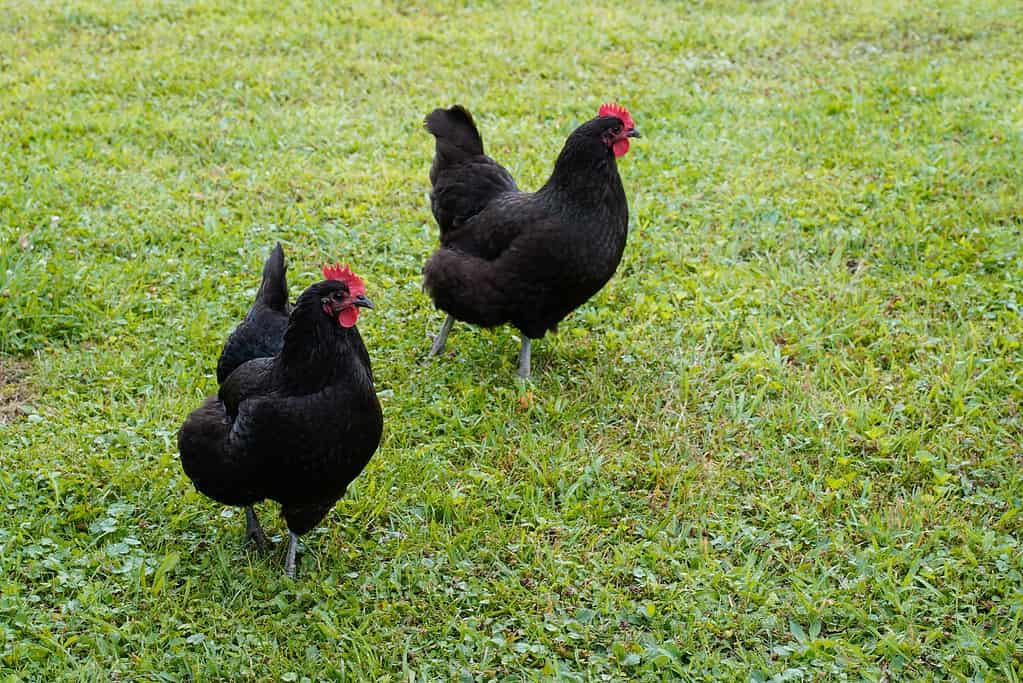
Australorps are happy as free-range birds and have a gentle, calm disposition.
©Kathy D. Reasor/Shutterstock.com
Faverolle
This breed is sweet and a little goofy. So, if you want to be entertained by your chickens, they’re the ones for you! Faverolles are affectionate and enjoy sitting on laps. The only downside is that they are disease-prone and require extra care.
Faverolles produce roughly three to four eggs every week, which is no small amount. And that yield will be higher with multiple birds. Chickens in this breed may have salmon, black, cuckoo, blue-laced, or buff feather.
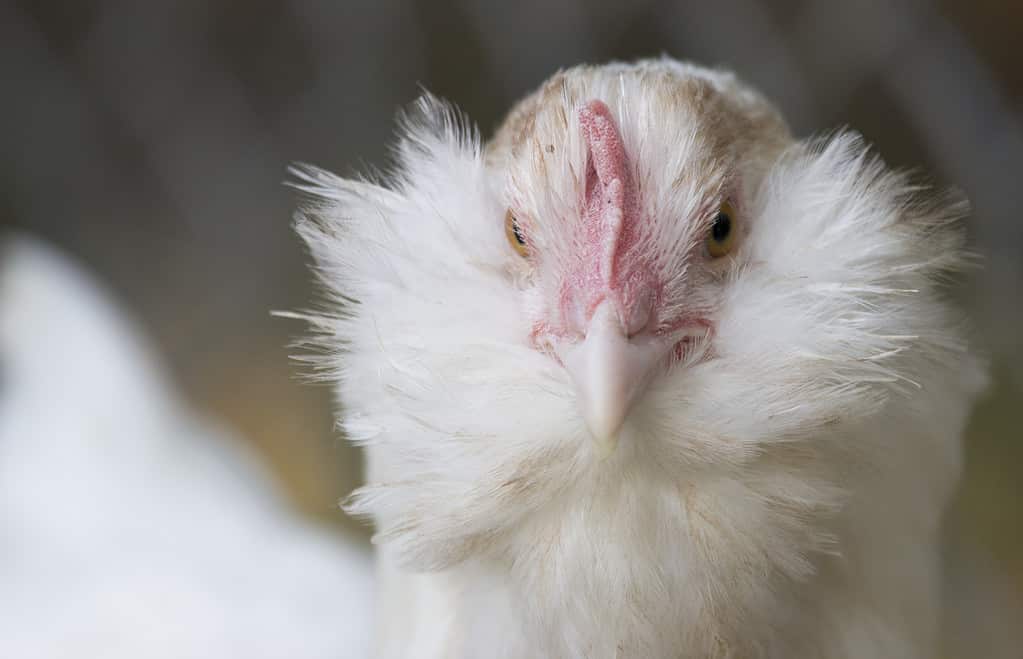
Faverolles enjoy having fun. So get ready for some goofy times with this bird!
©JZHunt/iStock via Getty Images
Pets
Other chickens don’t lay a tremendous amount of eggs. However, they make up for that lack of production with an overall fantastic demeanor. These breeds make lovely pets.
Cochin
Cochins are loving and enjoy being cuddled. Their easy-going nature and soft feathers make them a great addition to families with small children around. They are larger, running 8 to 11 pounds at maturity. However, don’t let their size fool you. They are very gentle.
Technically, cochins are dual-purpose birds. But they are not usually owned for that. They may have blue, buff, golden laced, partridge, brown, silver laced, black, or white feathers.
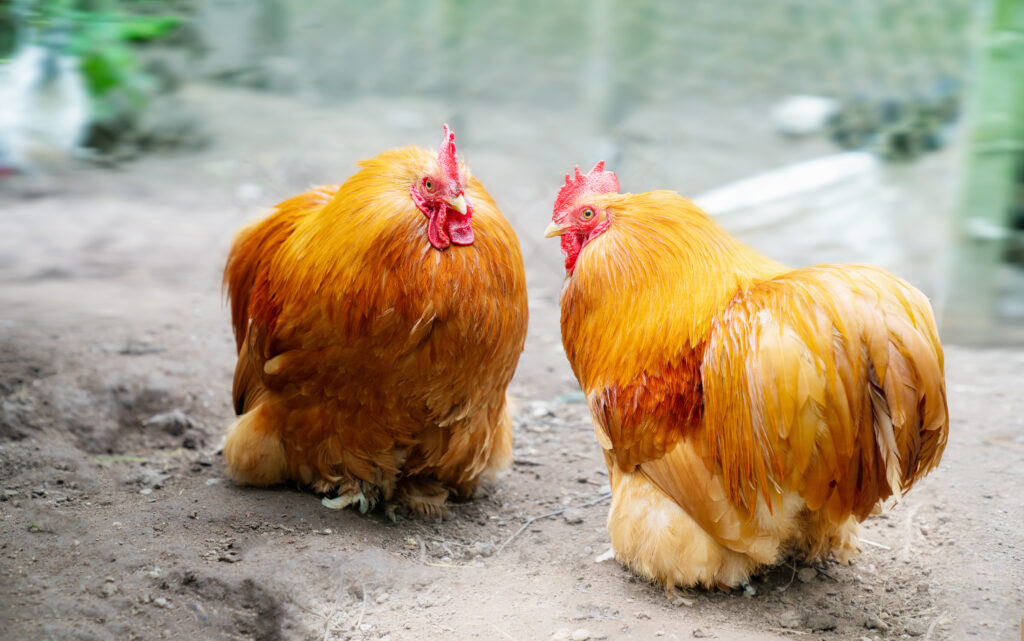
Cochin chickens are far friendlier than their large size may suggest.
©Algirdas Gelazius/Shutterstock.com
Sultan
These affectionate birds have a highly unique appearance, making them a fascinating addition to any flock. Sultan chickens were first bred by Turkish royalty. And they look regal! They are affectionate and gentle. However, sultans are more of a show bird than a production bird.
All Sultan chickens only have white feathers.
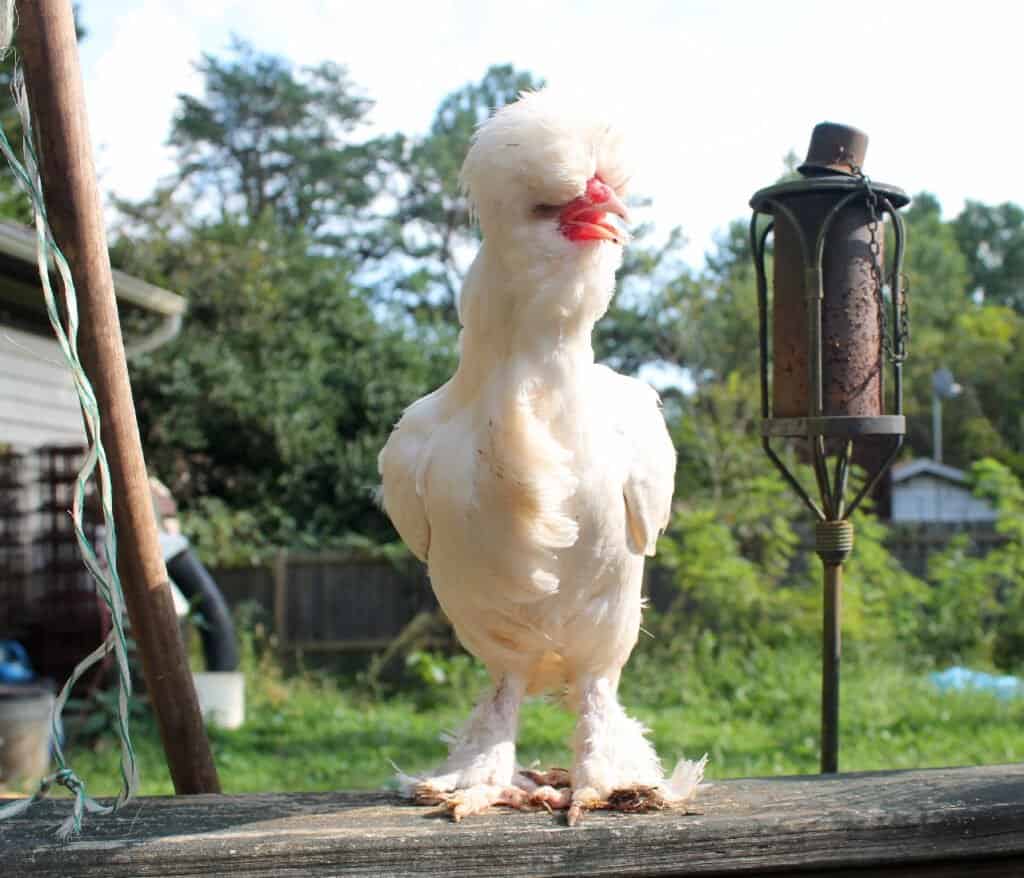
Sultan chickens have a truly unique appearance and are fun to have around.
©Consolvo Images/Shutterstock.com
Silkie
Silkies are great companion pets! They are docile and love getting cuddled. This breed does well around small children. However, there are a few possible downsides. These chickens need plenty of attention. Due to their docile nature, they can get bullied by other breeds.
The beautiful plumage seen on silkies is one reason many people choose to raise them. Some of the recognized colors are black, buff, blue, gray, and partridge.
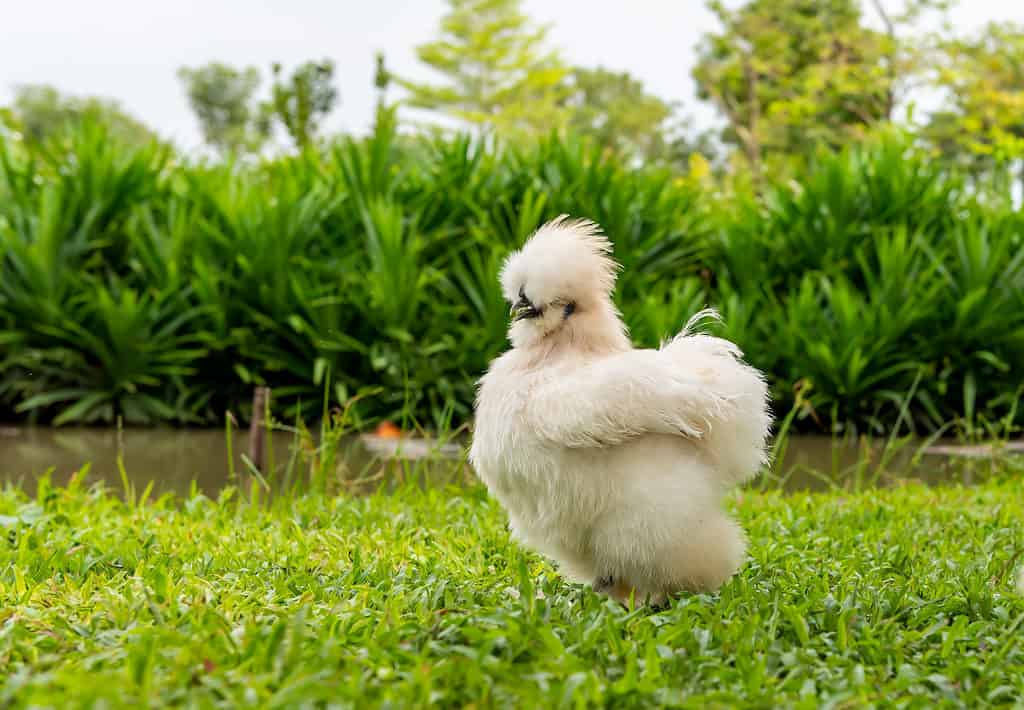
Silkies love attention and enjoy being held.
©MR. AEKALAK CHIAMCHAROEN/Shutterstock.com
Sebright
This breed is curious, affectionate, and friendly. Get ready to have these chickens follow you around the yard while you work! They are a true Bantam and one of the smallest breeds available. They typically weigh no more than one and a half pounds at maturity.
Sebrights have two recognized colors – silver and golden.
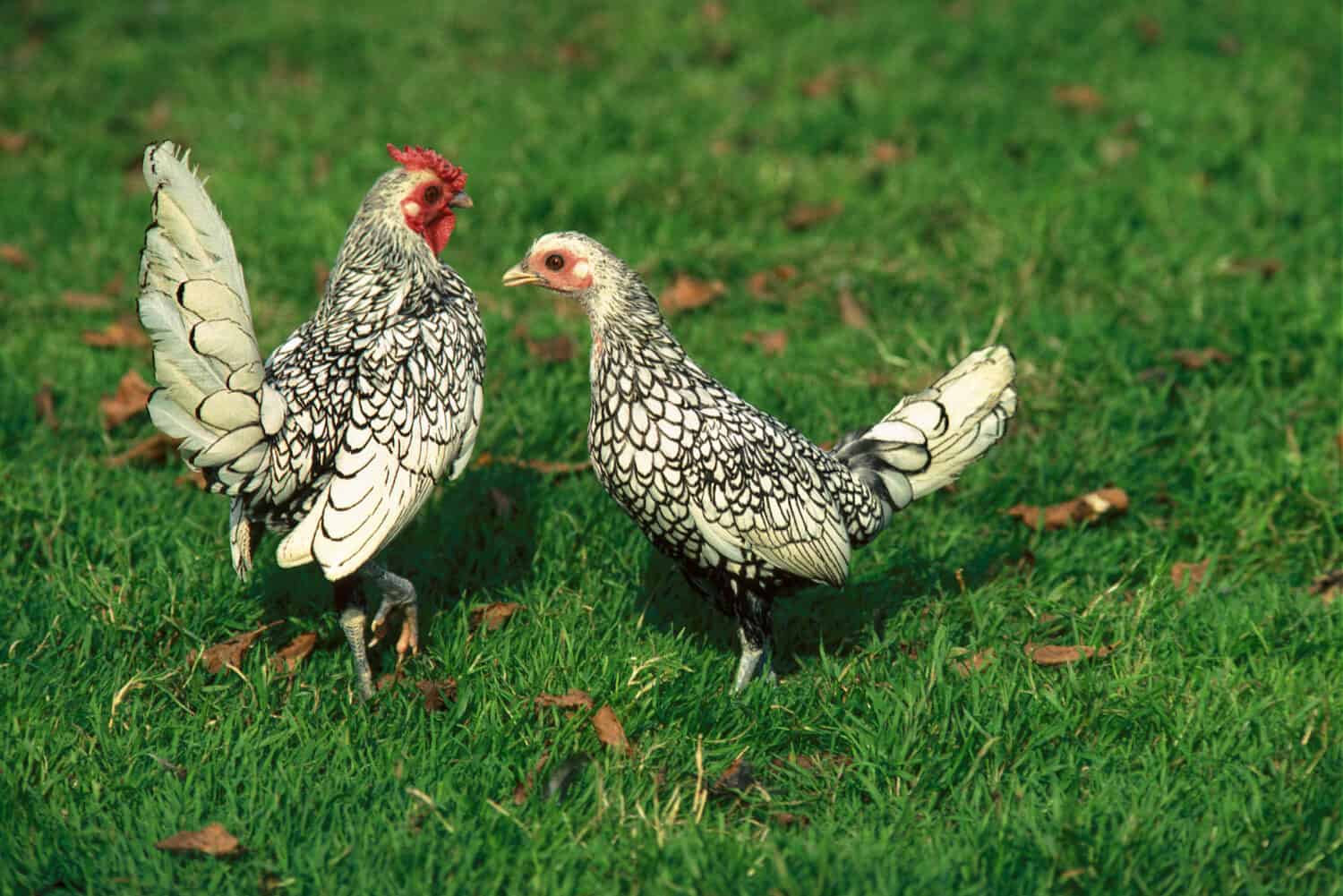
Sebrights have a distinguished appearance, are friendly chickens, and have loads of curiosity.
©slowmotiongli/Shutterstock.com
Jersey Giant
Many people refer to Jersey Giants as gentle giants, which is an apt moniker. They are huge birds weighing up to 15 pounds at maturity. Plus, they are docile, easy-going, and great with children. This breed will need more space due to their sheer size, so plan accordingly.
Jersey Giants will have black, blue, or white feathers.

Many people refer to Jersey Giants as gentle giants, which is an apt moniker as they are huge birds weighing up to 15 pounds at maturity.
©Ballygally View Images/Shutterstock.com
The photo featured at the top of this post is © 09arts/Shutterstock.com
Thank you for reading! Have some feedback for us? Contact the AZ Animals editorial team.







